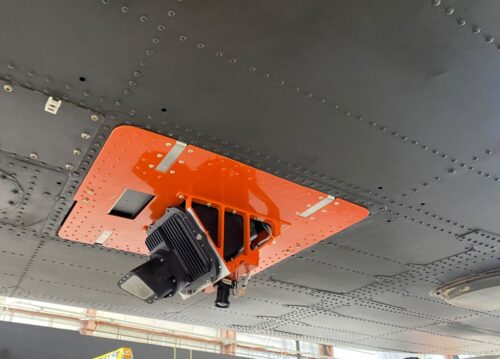The U.S. Army Combat Capabilities Development Command Aviation & Missile Center (AvMC) achieved a significant milestone with the successful test of its Visual Based Navigation (VBN) system. Drawing inspiration from the Transcontinental Airway System, which revolutionized flight a century ago, VBN takes on a more dynamic role in today’s era.

Photo: U.S. Army
The recent test involved attaching a camera to an experimental Black Hawk helicopter, capturing terrain imagery during flight. This imagery was then cross-referenced with a map database, providing accurate location information to the pilot when GPS signals are unavailable.
While modern Army pilots have sophisticated global positioning systems at their disposal, the reliance on GPS alone can pose challenges in certain situations, particularly when facing near-peer threats in the electromagnetic spectrum domain. As part of the Army Futures Command’s efforts to address this concern through Assured Positioning, Navigation, and Timing, the development of VBN has emerged as a valuable solution.
The technology behind VBN, developed by industry partners at Leidos, is entirely government-owned, highlighting the Army’s commitment to enhancing its capabilities through internal research and innovation. AvMC Navigation Technical Area Lead, Dr. Greg Reynolds, emphasized the dedication and effort invested in making the VBN test a success. He credited the combined efforts of AvMC’s Rotorcraft In-Flight Labs, Flight Test Division, and Missiles Navigation Technology Division, along with the Program Executive Office Aviation’s PM Assured Airspace Access Systems.
The initial VBN test yielded more than just a successful outcome. After the experiment, the camera technology was left on the aircraft for subsequent flights in a ride-along status. This unexpected boon provided additional data that proved invaluable in streamlining the algorithm and further enhancing the system’s accuracy.
One of the key figures instrumental in the test’s success was Experimental Test Pilot Lt. Col. Wes Ogden, who piloted the aircraft during the trial. Ogden praised the contribution of Test Engineer Kevin Thomazios and his leadership, emphasizing the seamless collaboration between AvMC and their counterparts at Fort Eustis.
Beyond its application in manned aircraft, Visual Based Navigation holds great promise for unmanned missions and full-scale autonomy. In unmanned scenarios, where GPS signal loss could occur, VBN’s position aiding capabilities become vital in ensuring the safe and effective accomplishment of missions. This technology offers the crucial backup system necessary for unmanned aircraft to maintain their position and successfully complete missions before returning safely to friendly lines.
For more information, hit the Source below